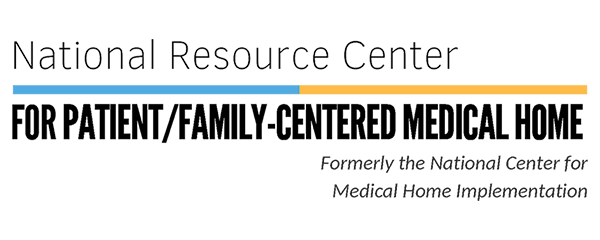Overview
The Fort Peck Reservation in Montana is home to 2 Indian Nations, the Assiniboine, and Sioux. Each tribe is composed of several bands and divisions. In 2010, through the leadership of the tribal council and tribal chairman, Fort Peck embarked on an incredible public health journey to address the health and wellbeing of their citizens – beginning with their children. The Health Promotion Disease Prevention program provides a long list of services for children and youth and has expanded into adult programming. The tribal council has successfully leveraged the resources and policies of Montana to support the program and has found extraordinary outcomes of improved health and wellbeing for children on the Reservation.
Recommendations
Recommendations for entities interested in implementing a similar model to improve the systems of care through the medical home lens:
- Let the community you are serving guide you.
- Engage and actively listen to the children and youth for whom services will be developed to a build a stronger, more robust program that has buy-in from the priority population from the beginning.
- Example: The tribal leadership actively sought out and spent time with children and youth on the Reservation to learn more about what they wanted for their health and wellbeing. The program was developed and has greatly expanded from these ongoing conversations.
- Engage and actively listen to the children and youth for whom services will be developed to a build a stronger, more robust program that has buy-in from the priority population from the beginning.
- Ensure the services you are offering are truly accessible to the community you serve.
- Consider where the community you are serving spends their time, such as schools to lessen transportation limitations. Examine which barriers exist in the community receiving available services. Reflect on potential opportunities and leveraging current infrastructure to meet people where they are.
- Example: The Health Promotion Disease Prevention program utilized school-based health care and telemedicine to be as accessible as possible to children and youth participating in the program.
- Consider where the community you are serving spends their time, such as schools to lessen transportation limitations. Examine which barriers exist in the community receiving available services. Reflect on potential opportunities and leveraging current infrastructure to meet people where they are.
Data/Outcomes
- From 2012 – 2021, youth graduating from high school has increased from 65% to 84%.
- From 2017 – 2021, emergency room visits for children between the ages of 5-18 years old have decreased by 32% and hospitalizations have decreased by 30.2%.
- Increased access to mental and behavioral health services via integration of behavioral health services into school-based clinics have had a significant impact on suicide rates – whereas about 6 young people have died by suicide annually, there has not been a single death by suicide in youth in 18 months.
Project Background
- The Health Promotion Disease Prevention (HPDP) program provides numerous school-based health and telemedicine services to children and youth on the Fort Peck Reservation.
- School-based health services include, but are not limited to:
- Nutrition and exercise counseling
- Preventive mental and behavioral health
- Drug, alcohol, and tobacco education and counseling
- Suicide prevention
- Physical therapy
- Dental health
- Resiliency training
- Pediatricians are available in-person or via telemedicine during school hours to provide services and care for children as needed at school-based clinics.
- The Fort Peck reservation is large – over 1 million acres. For pediatricians to efficiently care for children, visits that are appropriate for telemedicine are completed virtually to reduce the amount of time pediatricians and families/caregivers are traveling across the reservation for in-person appointments.
Funding Mechanism
- The HPDP program is funded through the Montana Medicaid Tribal Health Improvement Program which supports eligible tribal services through a unique capitation system.
- This funding differs from Indian Health Services (IHS); IHS mainly provides primary care whereas the HPDP provides preventative and support services to address the health and wellbeing of children and youth on the Reservation.
- Eligible provider services through the HPDP can bill for encounters made through the program.
- The program does not require additional outside funding to provide continuous care and is self-sustaining through Medicaid programming and eligibility but is open to all students regardless of coverage or eligibility.
Related American Academy of Pediatrics (AAP) Policy
- The work of this promising practice aligns with recommendations and evidence outlined in the AAP policies, “Caring for American Indian and Alaska Native Children and Adolescents”, “Telehealth: Improving Access to and Quality of Pediatric Health Care”, and “Telehealth: Opportunities to Improve Access, Quality, and Cost in Pediatric Care,”
For more information on the Fort Peck Health Promotion Disease Prevention Program, contact us.
The American Academy of Pediatrics (AAP) acknowledges the historical and current trauma endured by the Assiniboine and Sioux nations due to the federal government of the United States of America. The AAP believes we can and should actively give voice to, and solicit experiences from, Indigenous communities and all marginalized communities to inform our collective efforts to meaningfully, equitably, sustainably, and effectively address the needs of families from these diverse communities.
The information presented in this resource does not represent an endorsement or an official opinion/position of the American Academy of Pediatrics.
The National Resource Center for Patient/Family-Centered Medical Home is supported by the Health Resources and Services Administration (HRSA) of the U.S. Department of Health and Human Services (HHS) as part of an award totaling $500,000 with no funding from nongovernmental sources. The information or content are those of the author(s) and do not necessarily represent the official views of, nor an endorsement, by HRSA, HHS or the U.S. Government.
Last Updated
06/07/2024
Source
American Academy of Pediatrics
